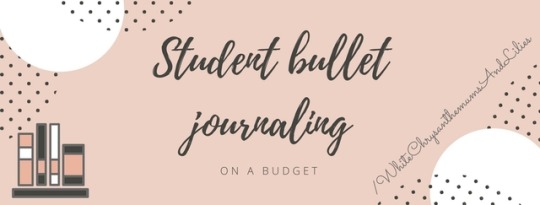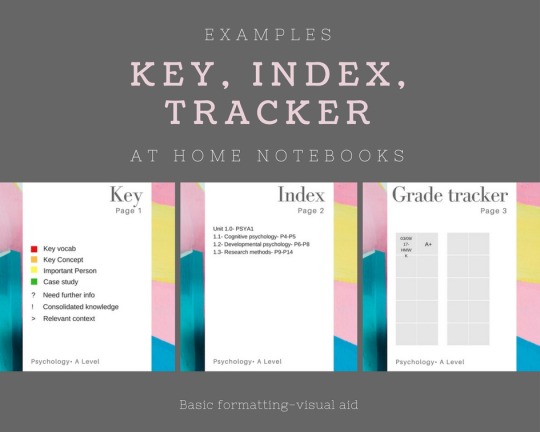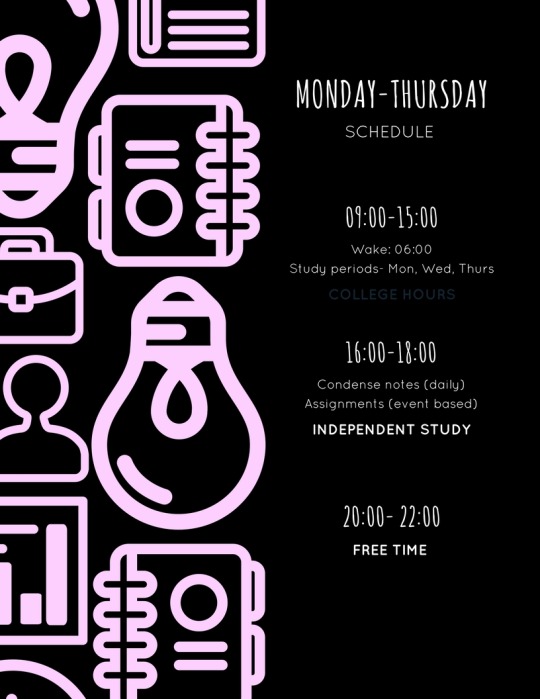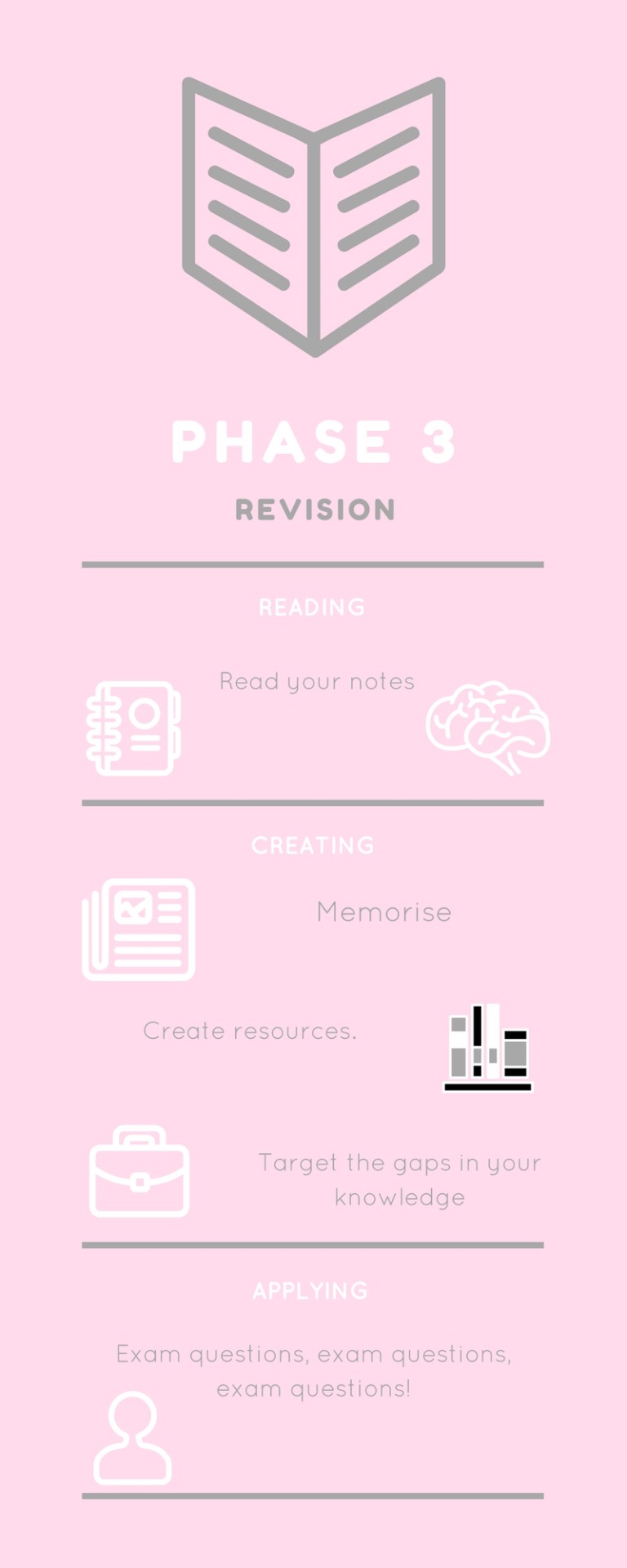#and if this gets enough people I can make a page of UK studyblrs and their descriptions
Explore tagged Tumblr posts
Text
UK Studyblrs
Please reblog/like if you are a studyblr and you are based in the UK, go to a UK university/school or do A levels/GCSEs/Scottish qualifications.
Comment or tag which category you fit into because I think it is so helpful to be able to relate, ask questions and share experiences with people who have gone through and are currently going through. Its also great when the finds/cool stationary people in the Uk can actually get.
Some of the UK Studyblrs that I know of: @procrastilate @alimastudies @growstudies @gostudyamy @study-spo @magpiesbrain @to-work-or-not-to-work @joolshallie @maryplethora
#uk studyblr#studyblr uk#a level studyblr#gcse#a levels#overachievering#mine#I hope its okay with this people to tag them in this post#I might have forgotten some people I follow#If you want your name added#I can#and if this gets enough people I can make a page of UK studyblrs and their descriptions
18 notes
·
View notes
Text
A little bit about BSL...
Every once in a while I see posts by hearing UK studyblrs wishing to pick up BSL (British Sign Language) and not knowing where to start. There are usually a few links shared, but few posts seem to go into any depth about BSL as a language, or Deaf culture. So I thought I’d share a little of what I’ve learned, as a beginner in BSL, so anyone completely new to BSL but interested in learning gets a better idea of where to start. It must be noted that, as a hearing individual, my experience of Deaf culture has only scratched the surface and can’t even begin to do the topic justice; that’s precisely why I recommend both further reading and learning with an accredited centre run by the Deaf community. If there are any inaccuracies in my post, I’d be more than happy for anyone to add to my post or correct me. Why learn BSL?
The reasons why anyone chooses to learn a langauge can be unique to them. Many learn BSL because they have to; many speakers are Deaf, or have loved ones who are, and therefore become immersed in the community. Some learn BSL for work. Others learn it for other reasons. Although 9 million people experience hearing loss (19% of the population), most of them become hard of hearing later in life, and most of them do not learn how to sign. Only around 50,000 people use BSL as their preferred language according to the government, though BAD suggests the figure is higher, between 151,000 and 87,000.
For me, I felt that the Deaf community are under-served; they face poorer health outcomes in a wide range of conditions. I feel that provision for deaf people is often inadequate, and I’ve seen firsthand how frustrated my elderly patients can be when we struggle to communicate with them. I learned to communicate much better with them, but I felt that it would be nice to do more. Although I know that it’d take me a long time to become anywhere near fluent enough to be able to converse with my Deaf patients independently, I hope that the BSL I do learn can help me to make them feel more comfortable and included.
The background: Deaf Culture
A good starting point would be to do some reading on the Deaf community in the UK, and on the history of Deaf Culture and BSL as a whole. Here’s a good clip on Deafhood. Here’s a useful timeline. Here’s a non-exhaustive list of films about the Deaf community.
Like many minority languages, sign languages have faced more than their fair share of oppression and silencing. Although the hearing world interprets deafness as a disability, most Deaf people will tell you that Deafeness is their rich culture; they do not feel disabled in the world they create for themselves; only when the hearing community is unwilling or able to meet their needs. The reason for this is partly that it’s a very practical language; it relies a lot on how exactly you create the signs, and ‘sloppy’ signing is something that we can all fall into when we don’t know what we’re doing. You couldn’t get to being fluent in French just by talking to yourself, so it’s just like that. It’s also important because BSL is its own language, with its own construction; you don’t usually put the signs in the same order as they would go in English, and these kinds of things can be harder to get from books; whereas when communicating with people, it all starts to flow more naturally. It’s also important in the sense that when we learn BSL, we are learning about and participating in a culture; it’s not something we can learn in isolation from the Deaf people whose culture and life experience it is. It’s not just a language; the Deaf community has its own way of communicating, and it’s own history and social events; learning BSL from a book can help, but the best way to really understand the people you wish to communicate with is to ensure that you actually learn to speak with them, and not at them. It’s also worth noting that there are lots of regional signs and dialects; just because BSL has exam boards doesn’t mean the signs used are the same everywhere; for example, two of my instructors used different signs for ‘blood’; neither was wrong, they were just different.
Learing resources: why face to face teaching is better: It’s great that there are lots of resources online, which can certainly help build up your confidence with the basics and foster independent learning, but just like any language, the most useful way to learn is through a framework or qualification of some kind. So if someone’s interested in learning BSL, I do recommend face-to face lessons, or at least regular communication with Deaf people.
The best way to practice is with native users; this is why accredited BSL instructors; generally have to be Deaf, and lessons take place only in BSL. This sounds intimidating at first, but it makes the experience really immersive; you’ll be surprised how fast you pick things up. It’s also important because it provides work for native users who are fluent in BSL; deaf people can face more limited employment options because the hearing world can struggle to accommodate them, so supporting Deaf instructors can help the community as a whole. Self-directed learning: There are books and videos out there that can help guide you (videos thend to be more useful, because movement can be an important component of signs), and no matter how else you are learning, it never hurts to have more materials available. You’ll probably want to start with things like the signing alphabet, numbers, etc, which are most important, because in BSL if we’re not sure what a sign is, finger spelling it out is how we learn our vocabulary. There are dictionaries, which are amazing and can make life a lot easier, but just like learning any other language it helps to work alongside a framework of some sort; to start with building the vocabulary and constructions to deal with everyday topics until you can say interesting and useful things. Qualifications: If you want to pursue learning sign language further, and have an actual qualification in it, Signature and iBSL are the examination boards for BSL, and The qualifications for BSL are set by level; so there’s level 1, 2, 3, 4, with the complexity and level of fluency increasing the higher up you go. Signature’s website can help you find local learning centres and sign up to face to face courses. I also recommend this because local learning centres will also often host social events for BSL users and learners, and that can be a great way to practice the language and learn about the culture from the Deaf community. Some more (free and paying) useful sources:
British-sign.co.uk dictionary
Signworld do some basic ‘learn sign language’ videos
Deafworkmate has some really useful basic videos that can help with basics like sign order.
I love SignBSL’s dictionary of youtube clips for various words and it also comes as an app.
Signstation are part of the University of Bristol and have some really useful lessons.
British Deaf Association
British sign language dictionary with videos
BSL discussion forumBSL
SignBankSchool of Sign Language
UCL signbank.
Some Early Years material with basic signs
Signature (BSL exam board) have their own website with resources.
Deafbooks’ shop has a wide range of dictionaries and useful books and flashcards.
Deafbooks also have a free downloads page.
More useful resources for learning BSL.
DCAL list of BSL lexical norms.
Macmillan cancer support have some great videos explaining cancer in BSL; good for health-related vocabulary.
Signhealth charity.
Chemistry terms in BSL.
list of 10 useful sites for learning BSL for free.
List of apps focused on BSL.
Finding courses: Hotcourses and Courses plus have a list of online and face to face courses that you can attend. Some of the online ones are heavily discounted, and might be useful if the affordability of face-to-face classes is a challenge (or a time issue). british-sign.co.uk also have their own online courses for a reasonable price. he quality of the courses listed on these websites might vary; I’m not sure whether they are all Signature accredited. But there are a wide variety of courses in many areas, so it’s worth taking a look. If anyone is interested, Oxford uni has a list of resources for various sign languages around the world.
I’d like to finish with a quote from Oliver Sacks: “I found it an astonishing and moving experience. I had never before seen an entire community of the deaf, nor had I quite realized (even though I knew this theoretically) that Sign might indeed be a complete language – a language equally suitable for making love or speeches, for flirtation or mathematics. I had to see philosophy and chemistry classes in Sign; I had to see the absolutely silent mathematics department at work; to see deaf bards, Sign poetry, on the campus and the range and depth of the Gallaudet theatre; I had to see the wonderful social scene in the student bar, with hands flying in all directions as a hundred separate conversations proceeded – I had to see all this for myself before I could be moved from my previous “medical” view of deafness (as a condition, a deficit, that had to be “treated”) to a “cultural” view of the deaf as forming a community with a complete language and culture of its own.”(Seeing Voices, Oliver Sacks, © 1989)
74 notes
·
View notes
Photo

Taking Bomb Ass Notes on a Budget
Yes I am a Capricorn
Not all of us can afford the top of the range stationary of our dreams and with Enrolment day for colleges in the UK fast approaching, I thought Id share a comprehensive guide on everything I’ve learnt on how to make and take successful notes and how to get the grades you want on a low income budget.
Be warned: This post is mammoth.
A plan of 3 phases.
Phase 1- Pre School year
1.1- Gather supplies
For this to work, you need only the bare necessities- coloured pens/pencils, a ballpoint/gel pen, a 5 pack of highlighters (in place of midliners), and 2 notebooks (In Class and At Home)
In Class notebooks- Your In Class notebook is for scruffy notes taken on the fly. All these notebooks need is a lot of pages and a flexible margin. I recommend the metallic, geometric, spiral bound notebooks from Poundland for this. They’re simple but surprisingly good quality for a £1 product, the pages dont even bleed!
At Home notebooks- This is where the actual fun lies. At Home notebooks are the notebooks you use for your studyblr posts when you slip up and procrastinate an hour into your studies (we’re all human). Anything that gets you excited to rewrite your notes is good for this (re-writing your notes not only means you’ll be allowed bragging rights because you’re technically revising every night, you can sneak in the formatting and extra info you need without compromising on your note taking time in class)
Coloured pens/pencils/highlighters and a pen- These are pretty obvious supplies, used for the AH notebook’s colour coding and general decoration. The type of pens you use depends on how much your notebook pages bleed. Some recommendations I have are- 0.3mm assorted colour fine liners from The Works (The colours are great and they don’t bleed as much as other budget brands), the 20 pack of ballpoint pens from ASDA, and the 5 pack of highlighters from EITHER The Works or WHSmith if there’s a Back to School sale on.
1.2- Learn how you learn
This is possibly the most important step of all, you need to figure out how you can best take notes for your brain, i.e- what type of learner are you? This will greatly dictate how you format your AH notebook since different learners access different content to help them memorise, for example- a visual learner should fill their pages with arrows, diagrams and colour but a auditory learner would be better off writing summaries of their notes in the form of a speech to speak aloud later on.
(See x for a free quiz to determine your learning type :) )
1.3- Format your notebooks
Hannah Witton has a philosophy that if you’re spending more time on the organisation than actually executing your plan, you’re being inefficient. This step is to ensue you don’t fall into that habit. Formatting your notebooks before you start school means you have a pre-prepared resource that you can work straight onto, cutting the time you need to spend on your school work. Also its super fun! There are a few basic pages you need in both notebooks before you seize total creative freedom.
In Class- Really the only thing you need here is a Key page (see bottom of the section for an example) and a footnote at the bottom of your note pages to put the textbook reference in (this’ll save you so much time when you revise for tests and wanna expand on your notes honestly just so it, its worth it in the end)
At Home- Since this is a more traditional BuJo, you need a few more pages- A Key, a Index/Contents page and more heavily formatted pages (Ideally: A header (for the chapter name), a title (page contents/subject) and a footnote (revision guide reference))
For my Key, I like to include the colour code system (e.g- red for key vocab) and symbols for stuff like ‘needs more info’ and ‘info found’, relevant context ext. In my Index I like to break by chapter and then mini units (like how this is set out) but that’s a personal decision, that may or may not be how you choose to do it! I also like to include a Grade Tracker as a motivational tool but, again, you may decide against that.

P.S- For my note pages, I like to include a 2cm margin in which I can jot down symbols and colours without interrupting the flow of the page. Do with that what you will
1.4- Create a study space
The problem a lot of us have is procrastination and a catalyst for that is distraction. You’re never going to be able to focus sat on your bed near your phone and laptop with WiFi as well as you will in an environment where those distractions are removed (That’s why coffee shops and libraries are so popular!) Creating an environment that you associate productivity with can help to focus you on your task.
Study spaces dont have to be extravagant. Even if its just a chair and a desk in the corner of your room with a plug, a nice cushion, and a pencil pot. As long as it separates work and play, it will be more than enough for your studies.
Personal preferences will change the layout and atmosphere of your study space (e.g- background music or no background music, relaxed or stimulating, personal or detached) but I do recommend looking at the psychology of colour and doing some introspection to decide what will and will not work for you.
Phase 2- Study schedule
Once you’re back studying, you need to implement a schedule that’ll guarantee you stick to all the planning you did in phase 1 as opposed to having it sit there looking idyllic while you procrastinate by binge watching Stranger Things for the 9th time this month.
Obviously from 08:30am to around 15:30pm you’re out of your house and away from your study space, even longer if you travel via public transport, and unless you’re the worlds biggest morning person I wouldn't recommend studying from 06:00am unless its desperate cramming before a big exam SO that leaves the evenings.
A big mistake a lot of people make is taking a break before starting to study. This is the worst thing you can do, you know how the brain resets when you enter a new environment? Think of it like that. Once you sit on that sofa and watch some TV or start to scroll through Instagram, you’re not gonna want to move.
As soon as you get in, grab a big drink of water and a small snack and head up to your study space (it sounds painful and will be at first but as soon as it becomes a habit you’re gonna be much better off) I recommend devoting from 16:00pm to 18:00pm to studying, allowing time for you to make a dent on the piles of homework you’re definitely going to get without creating an antisocial and impractical eating schedule. Two hours is more than enough time to rewrite up to 4 subjects worth of notes (consolidating your knowledge and adding in any extra info “class you” wanted you to find) and to start on up to 4 subjects of homework, even if its 20 minutes for each task with a 5 minute break in between.
Those of you who work, like me, will have to negotiate this weekly to make sure you can slot the time in around your shifts, not forgetting weekends can be optimised as well. On weekends, operate on the basis of Hannah Witton’s schedule (my organisational mom)- The day is split into three segments, Morning, Afternoon, and Evening, work at a 2:1 ratio of Work:Play (unless you work weekends, also like me, in which case just aim to optimise the time you have left wisely while also not overworking yourself)
Additionally, make use of study periods!! If you know you have a study period that day, take one of your AH notebooks with you (I recommend the one you have the most notes for) and get ahead of time OR do your homework in the period so you only have to do your notes at home. Snatch up every bit of free home time you can! Its important to be allowing with yourself during this time, you’ll be doing heavy studying and while it is important to complete your tasks and not make excuses for not doing something, its equally important to relax and wind down and see friends because not doing so impacts greatly on your mental health and you come first!

It can be helpful to make study groups (as long as they’re used for actually studying) or meeting up with friends and studying together in order to get that interaction and escape from the stresses of student life. Having other students there means they can offer insight on any questions you have as well as being there as moral support, even if its just to compare notes with or to be talked to&at while revising. This is especially true near finals week and end of year tests, which leads me on to...
Phase 3- Revision
So you’ve got your selection of notes that you spent hours slaving over and you’ve got a perfect track record because of how efficient you were with your homework, what now?
Revising, much like this post, works in a rule of 3 trials- Reading, Creating, Applying (Id like to take a moment to thank my GCSE Geography teacher for this golden method of planning that I did not use but ShOUD HAvE)
Reading- 1 month (per subject). From start to finish, cover to cover, read your notes. Since they already include the relevant bits from the workbooks and revision guides, they are a vault of everything you need to know. Reading them in their entirety will refresh your memory of the stuff you forgot and allow you to see the subject as a whole, a perspective you might not have had previously since you were still learning it.
Creating- 2 months. Using what you’d forgotten, create resources (mind maps, flashcards, presentations, speeches) for you to revise from. This can be in the notebook or separate (I like to have them separate but that’s just me) just as long as they make sense for the learning style we talked about earlier. Use the resources and memorise them.
Applying- 4 months. Once you think you’ve done memorising, find past exam questions and papers and do them. Mark yourself (on the harsher side, just to be safe) and then check your grade. If you’re dissatisfied, go to the questions you didn't do well on, figure out what concept it was based on, re-revise it and find another question to try (repeat until happy) If satisfied, find harder and harder questions until you run out of material then get friends to make some for you OR think of the worst possible question you could get and then create it, answer it and mark it. Do this until exams happen or you feel like you’ve done enough.
Once you’ve finished the Applying phase, create a A4 page of max. 10 bullet points (for each exam) to peruse up until you enter the exam hall (bin it before you enter) then go in and kick ass!
A really good tool for this is GetRevising, a free site which helps you make study timetables and gives you thousands of pre-prepared resources (made by teachers and students) specified to your exam boards and subjects. Not spon i just fcking love GetRevising

If you do all this, you should find the work and stress load of studying greatly reduced and it’ll give you more than a fighting chance against the generation of harder exams that they’ve sprung on us.
Go fourth and get good grades babes.
All graphics were made with Canva
#studyblr#note taking#information#infographic#learning#school#college#bullet journal#student bujo#revising#uk#god this took years#ive been writing since 5pm#own post#jordan does advice#capricorn
2 notes
·
View notes